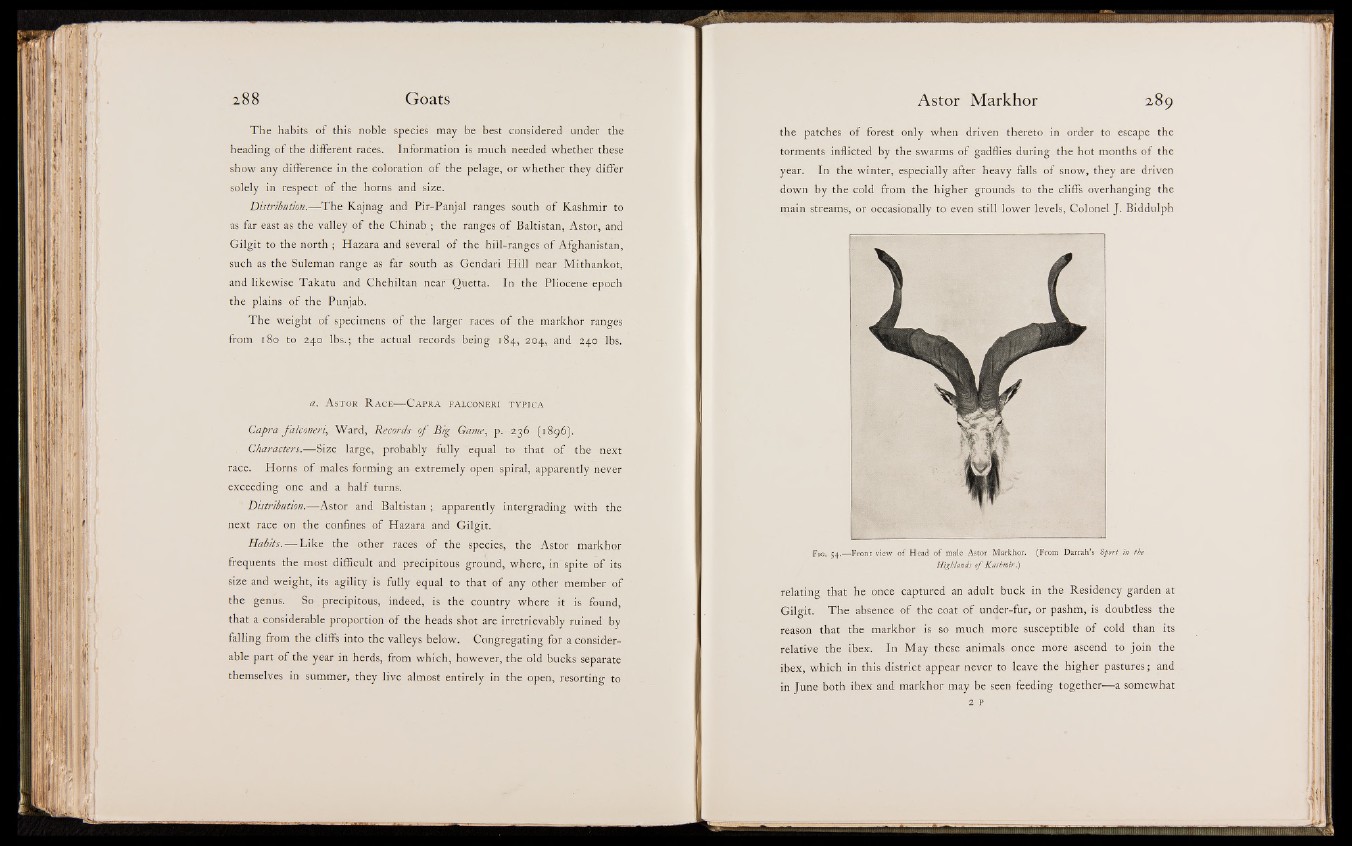
The habits of this noble species may be best considered under the
heading of the different races. Information is much needed whether these
show any difference in_ the coloration of the pelage, or whether they differ
solely in respect of the horns and size.
Distribution.—The Kajnag and Pir-Panjal ranges southjlff Kashmir to
as far east as the valley of the Chinab ; the ranges of Baltistan, Astor, and
Gilgit to the north ; Hazara and several of the hill-ranges of Afghanistan,
such as the Suleman range as far south as Gendari Hill near Mithankot,
and likewise Takatu and Chehiltan near Quetta. In the Pliocene epoch
the plains of the Punjab.
The weight of specimens- of the larger races, of the markhor ranges
from 1 86 to 240 ' lbs. ; the actual record^gjpeing 184, 204, and 240 lbs.
a . A stor R a c e— C a p r a f a i .coni.ki t y p i c a
Capra J'alconeri, Ward, Records o f liig Game, p. 236 (1896).
Characters.—Size large, probably fully 'equal to that of the next
race. Horns of males forming an- extremely open spiral, apparently never
exceeding one and a half turns.
Distribution.—Astor and Baltistan ; apparently intergrading with the
next race on the coniines of Hazara and Gilgit.
Like the other races of the species, the Astor markhor
frequents the most difficult and precipitous ground, where, in spite of its
size and weight, its agility is fully equal to that of any other member ofi
the genus. So precipitous, indeed, is the country where it is found,
that a considerable proportion-of the heads shot are irretrievably ruined by
falling from the cliffs into the valleys below. Congregating for a considerable
part of the year in herds, from which, however, the old bucks separate
themselves in summer, they live almost entirely in the open, resorting t@
Astor Markhor 289
the patches of forest only when driven th e re tg in . order to escape the
torments inflicted by the swarms of gadflies during the hot months of the
year. In the winter, especially after heavy falls of snow, they are driven
down |Sy the cold from the higher grounds to the cliffs overhanging the
main streamjgor occasionally to even still lower levels, Colonel J. Biddulph
Fig. 54.—Front view of Head of male Astor Markhor. |||From Darrah’s Sport in the
Highlands o f Kashmiri)
relating that he once captured an adult buck in the Residency garden at
Gilgit. The absence of the coat of under-fur, or pashm, is doubtless the
reason that the markhor SI - so much more susceptible of cold than its
relative the ibex. In May these animals f|jnce more ascend to join the
ibex, which in this district appear never to leave the higher pastures; and
in June both ibex and markhor may be seen feeding together—a somewhat
if!